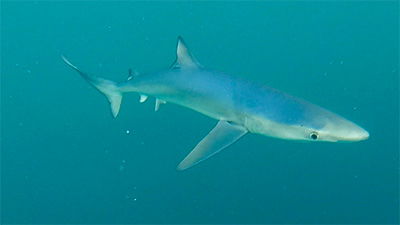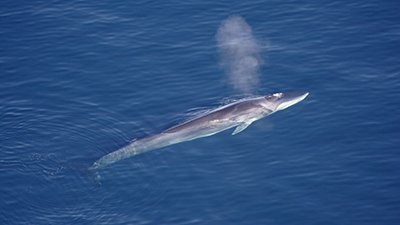The Sponge’s Squeeze
The secret of the sponge’s squeeze . . . revealed at last.
News Source
Movement without muscles: how do sponges do that? Debate has raged for a century. Modern technology has finally shown which of the sponge’s cells are doing the contracting. But the overarching goal of the Institute of Systematic Zoology and Evolutionary Biology is to identify the evolutionary forerunners of muscle cells.
A sponge consists of a cavity surrounded by a sandwich-like wall of cells. The outermost cells are called pinacocytes. The innermost cells are called choanocytes. In between is a gelatinous matrix called mesohyl. Mesohyl contains spicules and scattered spindle-shaped cells. Scientists have long debated whether the spindle-shaped cells in the mesohyl cause the sponge to squeeze or whether the skin-like pinacocytes are responsible.
Synchrotron radiation-based X-ray microtomography was used to generate 3-D images during contraction and expansion. Finally scientists know which cells are contracting: the pinacocytes.
Commenting on the importance of this research, Dr. Michael Nickel says, “The early evolution of muscles has not been fully understood so far. According to current scientific knowledge, muscle cells seem to have surfaced from nowhere. But surely there must have been evolutionary predecessor systems.” Now that his research has shown the epithelial layer of the sponge to be the contractile agent, he adds, “There is a lot of evidence that the sponge epithelial cells and the muscle cells of all the other animals are going back to a common contractile cellular predecessor.”
Nothing is known about the mechanism of pinacocyte contractility. Researchers hope that eventual elucidation of the cellular ultrastructure as well as genome analysis will reveal the ancestry of contractile cells.1
That the same molecules show up in different organisms is not proof of ancestry. God did not devise different kinds of biochemistry for each kind of organism.
Yet even if the same molecular motors (such as actin and myosin) are found to drive the contractility of sponge cells as they do for muscle cells, the evolutionary origins of contractility will not be proven. Non-muscular contractile cells have been examined in other organisms; some utilize actin and myosin, and some utilize other proteins to drive the process. That the same molecules show up in different organisms is not proof of ancestry. God did not devise different kinds of biochemistry for each kind of organism. Biologically and biochemically, living things on earth pretty much follow the same rules because they have a common Designer. It will be interesting to learn in the future what motor proteins are present in the sponge epithelial cells. But economy of design does not prove ancestry.
Further Reading
- Get Answers: Design in Nature
For More Information: Get Answers
Remember, if you see a news story that might merit some attention, let us know about it! (Note: if the story originates from the Associated Press, FOX News, MSNBC, the New York Times, or another major national media outlet, we will most likely have already heard about it.) And thanks to all of our readers who have submitted great news tips to us. If you didn’t catch all the latest News to Know, why not take a look to see what you’ve missed?
(Please note that links will take you directly to the source. Answers in Genesis is not responsible for content on the websites to which we refer. For more information, please see our Privacy Policy.)
Footnotes
- Michael Nickel et al., “The Contractile Sponge Epithelium sensu lato – Body Contraction of the Demosponge Tethya wilhelma Is Mediated by the Pinacoderm,” J Exp Biol 214 (2011): 1692–1698, doi:10.1242/jeb.049148.
Recommended Resources

Answers in Genesis is an apologetics ministry, dedicated to helping Christians defend their faith and proclaim the good news of Jesus Christ.
- Customer Service 800.778.3390
- Available Monday–Friday | 9 AM–5 PM ET
- © 2025 Answers in Genesis





